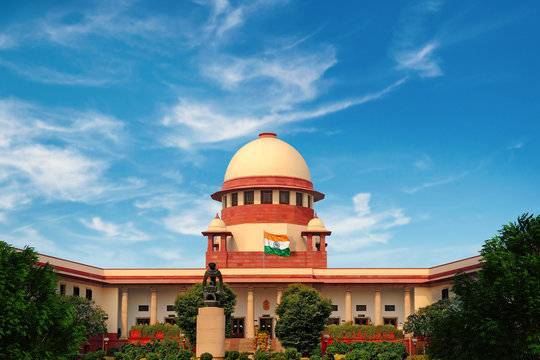
GAG LAWYERS -
GROVER & GROVER ADVOCATES

GAG LAWYERS -
GROVER & GROVER ADVOCATES

1) Bail, according to a bail lawyer, is the legal process of temporarily releasing a person from custody.
2) In India, bail is granted by the court to arrested persons who are charged with non-bailable offences. The person must be released on bail and appear in court at a later date. The amount of bail that is granted depends on the severity of the crime and the financial status of the accused person. In order to secure release from custody, the accused must post bail in cash to the court, or if their financial status is not good enough, they can put up collateral in lieu of posting bail.
3) To obtain a warrant for bail, the police need to prove that there is probable cause to believe that someone has committed a crime.
4) The facilities at which people accused of crimes can be held before trial are known as jails or prisons. These institutions vary in size and function but generally speaking, they house people awaiting trial and those convicted of criminal offences who have been sentenced to a term of incarceration.
5) The institution in which the person is held may be determined by a judge’s order or by law. Third, what is the meaning of “to secure release from custody?” To secure release from custody means to get out of jail or prison.

Bail is a form of security that is typically used by individuals in order to secure their release from custody pending trial or sentencing. The Indian bail system is quite different than the American one. It consists of two types of bail, namely bailable and non-bailable bail. The first type of bail, bailable bail, is released on the condition that the person will appear before the court at a certain date and time.
However, if they fail to do so, they will be considered fugitives, and their properties can be confiscated by law enforcement agencies. Non-bailable bail is released when it’s clear to the court that there are no grounds for suspicion against the person holding it. This means that even if they fail to appear before court at a certain date and time, there won’t be any consequences for them. A bail amount represents the money that is used by individuals in order to secure their release from custody. The Indian bail system is quite different than the American one.
It consists of two types of bail, namely bailable and non-bailable bail. The first type of bail, bailable bail, is released on the condition that the person will appear before the court at a certain date and time. However, if they fail to do so, they will be considered fugitives, and their properties can be confiscated by law enforcement agencies. Non-bailable bail is released when it’s clear to the court that the accused is not guilty or the charges are false.

The Indian legal system is complex, with many acts and provisions. It is not easy to find out what type of bail you can get in India.
There are a number of different types of bail in the Indian legal system. These include:
1) Bail on personal bond;
2) Bail on recognisance;
3) bail on undertaking; and
4) Bail on production of surety
The most common type of bail is bail on personal bond, which is used for people who have been charged with a non-bailable offence or those who are accused of an offence punishable with death, imprisonment for life, or imprisonment for seven years or more.
Only the magistrate can grant bail. The following are some guidelines for the bail process: A warrant is issued when the magistrate grants bail.
1) Bail is given on a person’s personal bond, not their property.
2) People who are accused of an offence punishable with death, imprisonment for life, or imprisonment for seven years or more cannot be granted bail.
3) If a person has been charged with a non-bailable offence, they cannot be granted bail unless there are special grounds to allow it. A warrant is issued when the magistrate grants bail; the ‘warrant’ is a document of authority that authorises an official to perform a task.
Or take some action, often criminal, and the magistrate issues the warrant to authorise an official to conduct a search for or seize property. The subject of the warrant is property, typically seized by law enforcement during a criminal investigation.

In India, filing a bail application is a legal process through which an accused person can be released from custody. The procedure for filing a bail application in India is as follows:
1) The accused must first apply for bail in a court of competent jurisdiction. This can be done either by the accused himself or through a lawyer.
2) The court will then consider the application and decide whether to grant bail or not. The court may conduct a hearing and ask the accused to appear before it to answer questions.
3)If the court grants bail, it will fix a bail amount. This amount can be paid in cash or through a surety bond. A surety bond is a document signed by a guarantor who agrees to pay the bail amount if the accused fails to appear in court.
4) If bail is granted, the accused must comply with the conditions of bail. This may include appearing for all court hearings, not leaving the jurisdiction, and not committing any offence during the period of bail.
5) In terms of fees, a lawyer may charge a fee for filing the bail application. The fee may vary depending on the complexity of the case and the lawyer’s experience. The court may also charge a fee for processing the bail application. This fee is usually nominal.

The Indian legal system is based on the British legal system. One of the most important concepts in the Indian legal system is bail. Bail is a form of release from custody before trial, and it has been recognised as an essential right in all jurisdictions.
1) The role of a bail lawyer in India is vital to ensuring that people are not wrongly convicted or released on bail without being able to show their innocence. The bail lawyer’s role also includes providing support for those who are incarcerated and assisting them with their cases.
2) Bail lawyers in India are often found to be well respected. They are able to argue their clients’ cases in court and use their knowledge of the law to provide legal support.
3) The legal profession is regulated by a multi-tiered system that covers all aspects of practice, including admission and bar councils.
4) The professional conduct of bail lawyers is governed by a Code of Ethics that helps ensure that attorneys act honestly and ethically in every aspect of their work. Bail lawyers usually specialise in either criminal or civil matters but may also work on both simultaneously.
5) The main difference between these types is what rights they are entitled to. Criminal lawyers have the right to act on behalf of their clients in all stages of criminal proceedings, while civil lawyers can represent their clients in a lawsuit but not during the trial itself.
In India, there are three main legal systems that operate simultaneously: the common law system for criminal and civil cases; Islamic law for personal matters such as marriage and divorce; and Hindu and Sikh law for purely religious matters. The Indian Penal Code is codified legislation under which criminal prosecutions are conducted in India. It was enacted by the British Raj in 1860, with its jurisdiction limited to areas under British rule.

1 Application for Bail: The accused must submit an application to the court to seek bail.
2 Documents related to the case: The court would require details of the case, including the FIR, charge sheet, and other related documents.
3 Documents of Surety: The surety will have to produce documents that prove he is of sound financial standing and can be trusted to pay the bail amount if the accused fails to appear for the court hearing.
4 Identity Proof: The accused and the surety will have to submit valid identity proof.
5 Passport-sized photographs: The accused and the surety will have to submit passport-sized photographs.
6 Bail Bond: A bail bond is a legal document that contains all the terms of the bail. It must be signed by all the parties involved in the case and submitted to the court.

In India, there are three main legal systems that operate simultaneously: the common law system for criminal and civil cases; Islamic law for personal matters such as marriage and divorce; and Hindu and Sikh law for purely religious matters. The Indian Penal Code is codified legislation under which criminal prosecutions are conducted in India. It was enacted by the British Raj in 1860, with its jurisdiction limited to areas under British rule.
The Indian legal system is based on the British legal system. One of the most important concepts in the Indian legal system is bail. A bail is a form of release from custody before trial, and it has been recognised as an essential right in all jurisdictions.
Bail lawyers in India are often found to be well respected. They are able to argue their clients’ cases in court and use their knowledge of the law to provide legal support.
The legal profession is regulated by a multi-tiered system that covers all aspects of practice, including admission and bar councils.
The professional conduct of bail lawyers is governed by a Code of Ethics that helps ensure that attorneys act honestly and ethically in every aspect of their work. Bail lawyers usually specialise in either criminal or civil matters but may also work on both simultaneously.
The main difference between these types is what rights they are entitled to Criminal lawyers have the right to act on behalf of their clients in all stages of criminal proceedings, while civil lawyers can represent their clients in a lawsuit but not during the trial itself.

Supreme Court of India:
1) Shanmugam Manjunath vs. State of Karnataka, (2005) 7 SCC 699
2) Varinder Kumar Bhalla vs. State of Punjab, (2009) 12 SCC 559
3) Navtej Singh Johar vs. Union of India (2018) 10 SCC 1
High Court of India:
1) State of Maharashtra vs. Anil Ramrao Waghmare, 2018 MANU HC 2060
2) Manjit Singh vs. State of Punjab, 2018 MANU HC 2748
3) Ravinder Singh vs. State of Haryana, 2018 MANU HC 3190